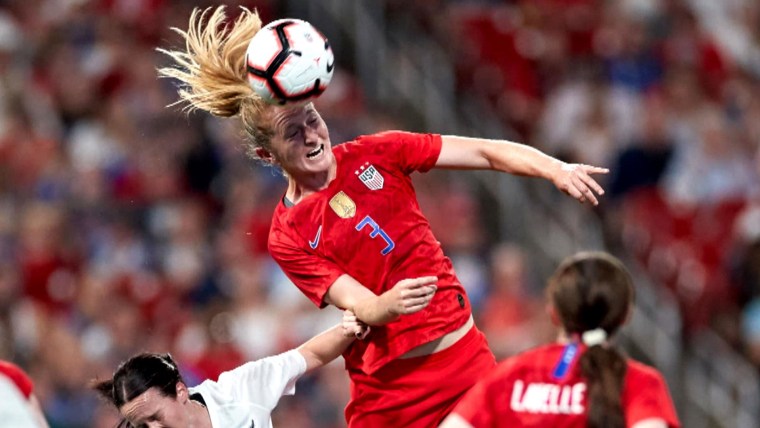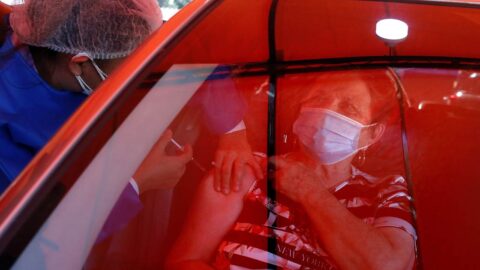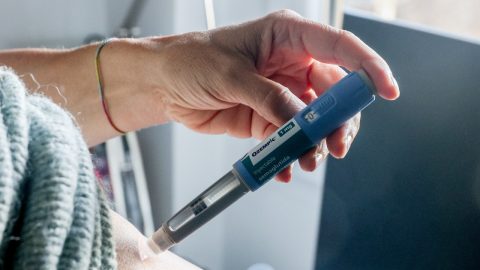A female professional athlete has been diagnosed with chronic traumatic encephalopathy, or CTE, for the first time, researchers say.
The degenerative brain disease, which is believed to be caused by repeated head injuries, was diagnosed in the Australian rules footballer Heather Anderson, who died at age 28 in November, researchers said.
Researchers and advocates urged new attention on how the issue might affect women in high-level sports.
In a paper published Friday outlining their findings, researchers said Anderson’s family had donated her brain to the Australian Sports Brain Bank, where the analysis took place.
The family had hoped to learn “whether a lifetime of exposure to repetitive head trauma contributed to her death,” said a report co-authored by one of the researchers behind the study and published by The Conversation, a nonprofit academic news site.
“She is the first female athlete diagnosed with CTE, but she will not be the last,” it said.
In their report outlining their findings Friday, researchers said “contact sports in which head injuries occur commonly” are “historically male dominated,” which “likely underlies the strong male bias in CTE prevalence to date.”
“However, the last two decades have seen a rise in popularity and participation in women’s contact sports, particularly among younger women aged 15–34 years,” they said.
Researchers also noted that available evidence suggested females were more susceptible to sports-related concussions than males, even when participation is controlled for.
Dr. Robert Cantu, a co-founder and the medical director of the Concussion Legacy Foundation, a nonprofit organization based in the U.S., said research on CTE in women needed to be “urgently” accelerated to help understand the situation better.
“Research shows women have an equal or greater susceptibility to concussion in contact sports, but we don’t yet know what that means for their risk of developing CTE,” Cantu said in a statement.
“We urgently need to accelerate research on CTE in women so we can prevent future cases, better understand how CTE impacts their behavior and cognition, and treat those who develop symptoms,” he said.
Dr. Chris Nowinski, a co-founder and the CEO of the Concussion Legacy Foundation, said, “The first case of CTE in a female athlete should be a wakeup call for women’s sports.
“We can prevent CTE by preventing repeated impacts to the head, and we must begin a dialogue with leaders in women’s sports today so we can save future generations of female athletes from suffering.”
CTE is a disorder that is still “not yet well understood,” the Mayo Clinic says on its website. Its development is associated with repeated head injuries “often occurring in contact sports or military combat,” it says.
In their report, researchers said that Anderson was an avid player from age 5 and that she played contact sports for 18 years.
“She had suffered one diagnosed concussion, with four other possible concussions not formally diagnosed but suspected by family,” the report says.
Anderson also served in the military for nine years and participated in amateur martial arts for three years, though no concussions were reported from those activities, the report said.
While the Mayo Clinic says that “there are no specific symptoms that have been clearly linked to CTE,” a number of symptoms have been recorded in people confirmed to have CTE at autopsy.
Among the symptoms associated with the disease are motor symptoms, including issues with walking and balance; cognitive impairment issues, including trouble thinking, memory loss and problems with planning; behavioral changes, including impulsive behavior and aggression; and mood disorders, including depression, apathy, substance misuse and suicidal thoughts or behavior.
An investigation is still underway, but the paper outlining researchers’ findings notes that “due to the circumstances surrounding the death, it is suspected the woman died by way of suicide.”
“While there are insufficient data to draw conclusions on any association between CTE and manner of death, suicide deaths are not uncommon in the cohorts where CTE is sought at autopsy,” researchers said in their report.
The British newspaper The Guardian reported that Anderson’s father wrote on Facebook after her death that it was suspected she had died by suicide. “The response to the news of Heather taking her own life has shown us that she had friends, teammates, and fellow soldiers all across the country,” he wrote.
If you or someone you know is at risk of suicide, please call the National Suicide Prevention Lifeline at 800-273-8255, text TALK to 741741 or visit SpeakingOfSuicide.com/resources for additional resources.











Recent Comments